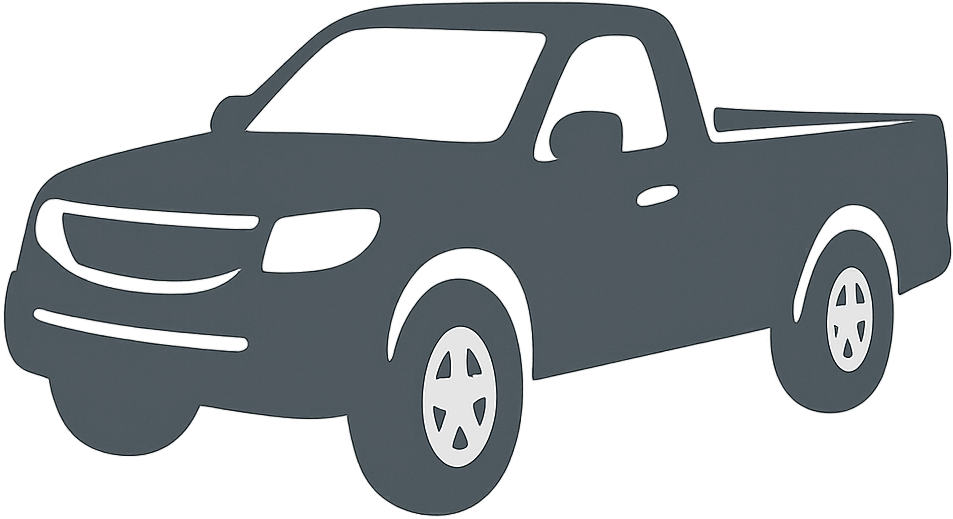 1980 Isuzu Campo Dimensions, Size & Specs
1980 Isuzu Campo Dimensions, Size & Specs
The 1980 Isuzu Campo pickup truck, produced between 1983 and 1991, is a compact and practical vehicle designed to meet the demands of light-duty hauling and everyday driving. The Campo belongs to the pickup truck segment, known for its utility and versatility. During its production run, it delivered a reliable performance with a strong focus on durability and functional design. While specific dimensions vary depending on trim and configuration, the 1980s Isuzu Campo typically exhibits a compact yet capable form factor. Drivers appreciated the balanced proportions, which combined ease of maneuverability with sufficient cargo bed space. Using the metric system as standard, the Campo generally measured around 4.3 meters (approximately 14.1 feet) in length, with a width close to 1.6 meters (5.2 feet), and a height near 1.7 meters (5.6 feet). These dimensions made it well-suited for urban and rural environments alike, offering a practical footprint that could adapt to various tasks. The pickup’s weight and build contributed to its agility and robustness, helping it tackle diverse road conditions. The Isuzu Campo represents an important chapter in Isuzu's history of producing reliable utility vehicles, encapsulating the brand's commitment to combining functionality with manageable size. Enthusiasts and collectors often note its role as a predecessor to more modern compact pickups, highlighting its classic design cues and enduring engineering quality. Overall, the 1980 Isuzu Campo pickup remains a notable example of an efficient and modestly sized truck tailored for practical use, appreciated for its straightforwardness and durable construction during its production years from 1983 through 1991.
Discover the standout features that make the 1980 Isuzu Campo a leader in its class
Have a question? Please check our knowledgebase first.
The Isuzu Campo of the 1983-1991 generation is a compact pickup truck that features practical dimensions suited for utility and maneuverability. While exact dimensions can vary slightly depending on model variants and market specifics, typically, the Campo measures approximately 4,265 mm (167.9 inches) in length, around 1,695 mm (66.7 inches) in width, and about 1,710 mm (67.3 inches) in height. These dimensions classify it as a compact pickup, making it versatile for urban and rural use. The size ensures that it can navigate narrow roads and tight spaces while still providing a capable cargo bed for hauling goods.
The Isuzu Campo pickup is designed primarily for light-duty hauling. Its cargo bed typically measures around 1,700 mm (66.9 inches) in length and approximately 1,400 mm (55.1 inches) in width, offering a practical space for carrying tools, materials, or smaller loads. Load capacity often ranges near 700 kg (1,543 lbs), depending on specific model variants and configurations. This capacity aligns with the truck's role as a compact utility vehicle, balancing between payload and everyday usability. The bed design also ensures ease of loading and unloading, with sturdy bed rails and a tailgate suitable for various hauling needs.
Yes, the Isuzu Campo fits comfortably within the dimensions of a typical residential garage. Most standard garages are about 2,400 mm (94.5 inches) wide and 5,500 mm (216.5 inches) deep, and given the Campo's length of around 4,265 mm (167.9 inches) and width of roughly 1,695 mm (66.7 inches), it leaves ample clearance for easy parking, opening doors, and moving around the vehicle. The pickup's height of approximately 1,710 mm (67.3 inches) also fits under standard ceiling heights, ensuring that the vehicle can be stored indoors without any special accommodations.
The 1983-1991 Isuzu Campo generated notable improvements in size over its predecessor. Early versions of the Campo were smaller and less refined, typically featuring reduced cargo bed space and slightly narrower widths. The newer generation expanded the length to approximately 4,265 mm (167.9 inches) and width to around 1,695 mm (66.7 inches), effectively increasing payload capacity and cabin comfort. The height also saw an increase up to about 1,710 mm (67.3 inches), enhancing interior headroom and overall presence. These dimensional upgrades contributed to better usability in both urban and off-road scenarios, making the later Campo more versatile compared to earlier models.
When compared to contemporaries such as the Toyota Hilux and Mitsubishi Triton from the 1980s, the Isuzu Campo sits well within the same size category. For example, the Toyota Hilux models of the era measured approximately 4,400 mm (173 inches) in length and 1,695 mm (66.7 inches) in width, quite close to the Campo's dimensions. The Isuzu’s slightly shorter length made it more maneuverable in tight spaces, though it maintained similar cargo capacities. In terms of height and weight, the Campo was comparable, providing a balanced ride height for both on-road comfort and off-road capability. Thus, it offered competitive utility without compromising drivability in its segment.
The curb weight of the Isuzu Campo from the 1983-1991 generation generally falls between 1,250 kg and 1,350 kg (2,755 to 2,976 pounds), depending on the specific trim and the presence of four-wheel drive options. This weight is relatively light compared to larger pickups, contributing to better fuel economy and nimble handling characteristics. The manageable weight, combined with the efficient engines offered at the time, allowed the Campo to perform adequately both on paved roads and off-road terrain. The lighter curb weight also helped enhance acceleration and braking performance, making it suitable for daily driving as well as utility use.
The Isuzu Campo is designed as a compact pickup with a two-door configuration, typically seating two to three passengers comfortably depending on the cabin layout. The interior, while modest in size, provides adequate legroom and headroom for the driver and front passenger, with practical controls laid out for ease of use. Rear seating was generally not included in most standard models, as the truck prioritized cargo space over passenger capacity. However, some versions may have had small jump seats or extended cabs for limited extra seating. Overall, the focus remains on utility and practicality rather than large passenger accommodation.
The Isuzu Campo during its 1983-1991 production was typically equipped with robust four-cylinder petrol or diesel engines aimed at balancing power and economy. Engine displacement was commonly in the range of 1.8 to 2.2 liters, depending on the market and model year. Manual transmissions were standard, usually featuring 4 or 5-speed gearboxes to facilitate versatility in driving conditions, including off-road. Some later variants offered overdrive options for improved highway cruising. The combination of these powertrains and transmissions helped the Campo deliver reliable performance, sufficient torque for hauling loads, and reasonable fuel efficiency for a compact pickup of its time.
The Isuzu Campo was designed with capabilities to handle off-road conditions typical of rugged rural and industrial environments. Its suspension system offers sufficient travel and durability to absorb bumps and uneven terrain effectively. Four-wheel-drive variants available in this generation further enhanced traction on slippery or loose surfaces such as mud, gravel, and dirt roads. The pickup’s relatively light weight and compact size contribute to good maneuverability off pavement. However, while it is competent for moderate off-road use, it was not designed as an extreme off-road vehicle but rather as a reliable workhorse that can manage challenging surfaces encountered during construction, farming, or forestry activities.
The fuel efficiency of the Isuzu Campo during this period was reasonable for a compact pickup truck, with average consumption figures typically around 8 to 11 liters per 100 kilometers (approximately 21 to 29 miles per gallon) depending on engine type, driving conditions, and load. The diesel variants were generally more economical compared to their petrol counterparts. Maintenance for the Campo is regarded as straightforward due to its relatively simple mechanical setup and widely available parts, especially in regions where Isuzu vehicles were popular. Regular servicing focused on engine oil changes, clutch adjustments, and probable suspension upkeep to ensure longevity. The robust design of the Campo contributes to durable performance even with extensive use.
